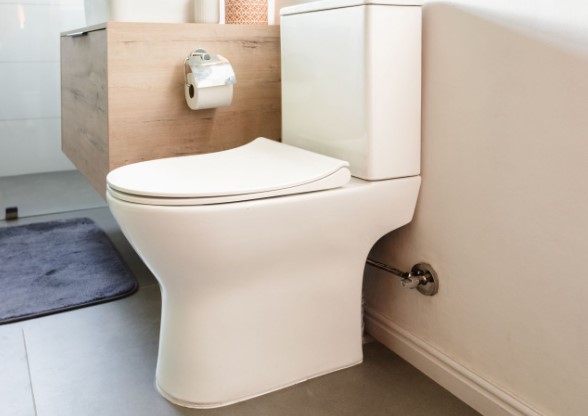We use our toilets daily. As long as they do their job, we flush them to wash away our waste. Sometimes, though, it doesn't complete the transaction, and we are left to deal with a partial flush, which is unpleasant.
Are you having this problem where it requires a few attempts to get the job done? There are several reasons why this happens. When using your toilet, you want it to do its job well. Follow these methods to keep things flowing fast and have peace of mind, knowing it fully lives up to its flushing potential.
Let's learn how to make the toilet flush better and even some tips on which are the best toilets for your home.
Clear Out Any Clogs
Toilets often build up debris in the pipes, causing a partial clog. You may not notice this because it still functions, but the flushing power becomes weaker as the drains and pipes get more restricted.
Clearing a clog is fairly easy with several methods to use, including:
- Using a plunger
- Pouring boiling water into the bowl
- Pouring baking soda and vinegar down the drain
- Using a plumber's snake
You can combine a few of these methods to see if this fixes the flushing issue. Consider making this a regular practice to avoid build-up and eventual blockage.
It is also good practice to only flush bodily debris and toilet paper. Feminine products, cotton swabs, paper towels and other items are too bulky or don't break down adequately to wash away the pipes. If something gets lodged along the line, it can catch other debris, eventually leading to a significant blockage.
Call a Plumber
Sometimes, a slow-flushing toilet is a combination of things or other factors. Finding the issues and correcting them is above your pay grade. This is the time to call a plumber. A qualified plumber knows what to look for and has the tools and expertise to quickly assess the situation and make repairs. This will get you up and running quickly.
It is worth the cost of bringing in a professional as they look beyond your current problems to ensure your toilet is in good shape and operating at peak performance.
Check the Rim Jets
Inside your toilet are openings under the bowl's rim to allow water to help flush waste away, but sometimes these become clogged. It is usually from a buildup of minerals, and it is hard to notice them getting blocked because they are concealed from view.
Use a small mirror and position it to look at the jets. Discoloration and scaling are telltale signs of mineral deposits and bacteria buildup. Mix a solution of 10 parts water and 1 part bleach or straight vinegar into the overflow tube inside the tank. It will flow down the tube and help break up the deposits. Let it sit for 10 minutes, and then flush the toilet.
Follow up with some scrubbing, using protective gloves and a thin wire tool to scrape away any leftover debris. Wash the rest of the bowl with your regular toilet cleaner for deep cleaning and follow up with the solution down the overflow tube. A final flush should wash away everything.
Adjust the Float
Inside your toilet tank is a mechanism to fill the tank to a certain level, wash away debris and refill the bowl. Once the level is depressed, the water drains and falls to trigger water to refill the tank. This is done until it reaches the top of the water level and turns the flow off.
If there is not enough water to make a strong flush, you can adjust the float to allow more water to accumulate in the tank. This will allow for a fuller, stronger flush.
Check Out the Flapper
Inside the toilet tank is a rubber component that hinges open and closed to release water into the bowl. It is connected to a mechanism that is moved by the lever, and once the water drains out, it lowers and creates a seal over the drain opening.
Over time, this flapper can degrade or become out of alignment with a proper seal. It leaks, decreasing the amount of water left for a flush. This leads to lower flushing power, but it can be easily corrected.
You can inspect the flapper to see if it needs replacing or realignment. Once corrected, you should see a vast improvement in your flushing.










